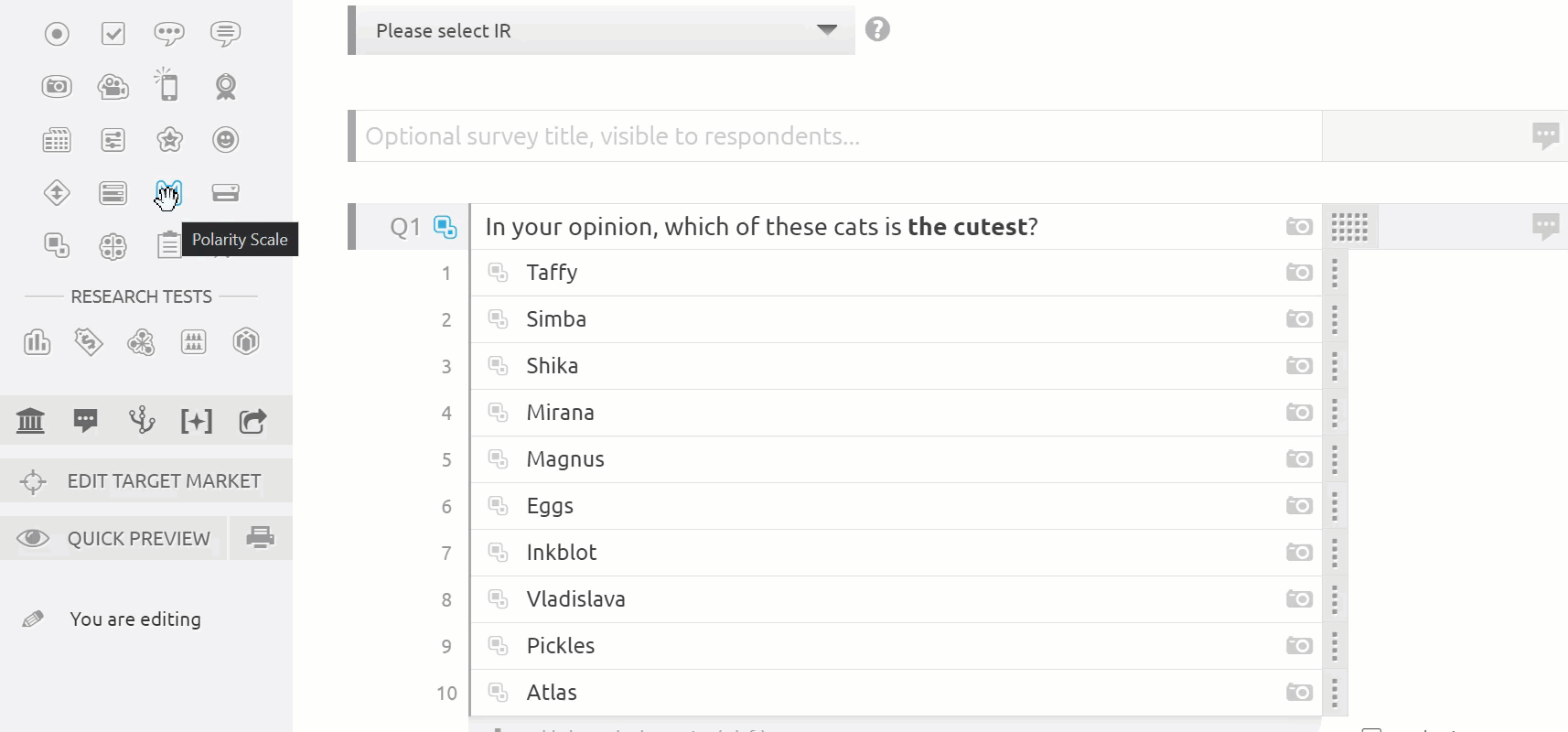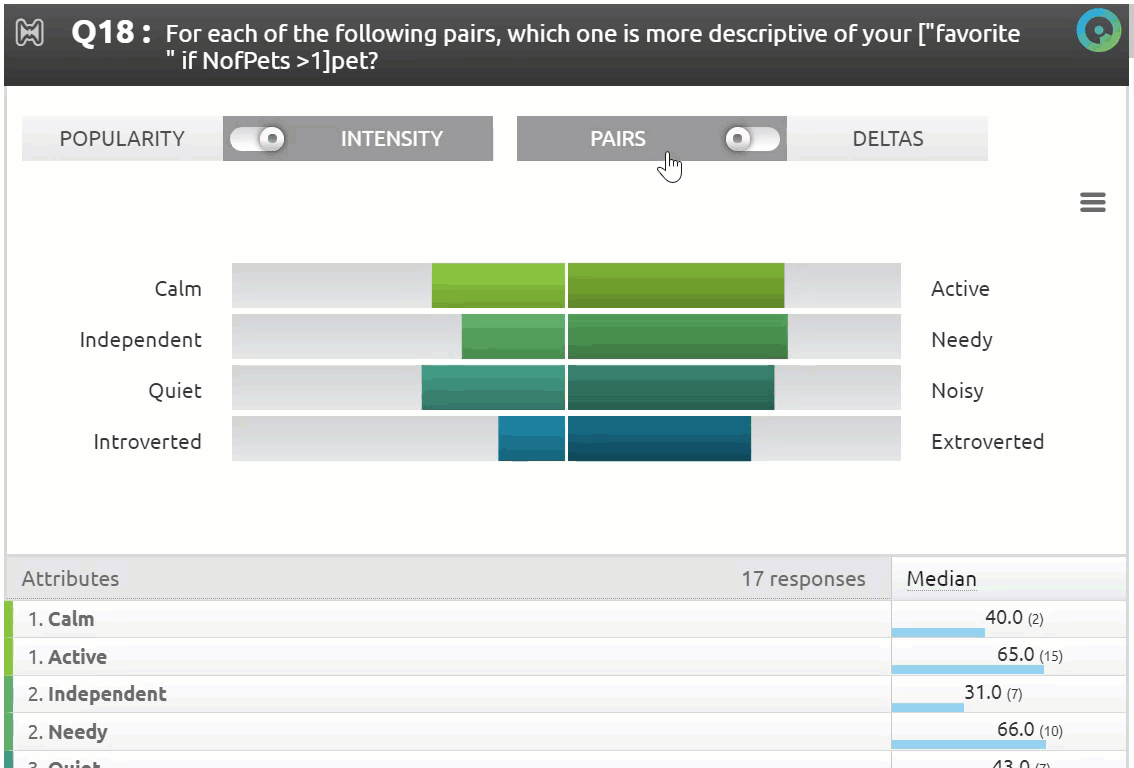A Polarity Scale question, or semantic differential, is used to obtain responses on a sliding scale between two extremes. When you add a polarity scale to a questionnaire, you can use a single question to ask about one or more aspects, qualities, or perceptions about that item at the same time. Each scale becomes a Sub-question since each one will have a unique response.
Want to learn more about our question types? Enroll in our Question Types Overview course in the Lighthouse Academy!

- In the Survey Editor, click the Polarity Scale Icon in the question menu, or drag the icon into place.
- Type or paste your question into the Question field.
- Type pairs of entities for respondents to evaluate into the Left label/Right label fields, and click the + icon to add additional answer options, up to 10.
- Click the drop-down menu to add an item from the library of common scales.
- Hover over a number and click the X to delete a Label option.
- Activate the Randomize checkbox to shuffle the Sub-Question or Matrix Answer orders for each respondent.
- Click the anchor icon to the right of an entity to lock the option in place on the list, despite randomization.
|
 |
- Click the Steps drop-down to select the number of steps available between the poles.
- Click the Snap to center checkbox to force the slider to the center when it is placed within a certain threshold.
- Click the Snap to Poles checkbox to force the slider to either end when placed within a certain threshold.
- Click the Accept Neutral checkbox to allow neutral responses at the center point.
- Click the Show Values checkbox to display a number value as respondents drag the scale into place.
|
 |
- Click the Sliders drop-down and choose Radio to display poles as a set of radio buttons.
- Click the Steps button to choose how many steps are available between poles.
|
 |
|
On the Results page, responses are presented in Intensity mode, or the degree to which respondents moved away from the center toward one side of the scale or another.
- Drag the second toggle from Pairs to Delta to view the calculated "winner" of each pair.
- Click the word Median to toggle the view between Median and Mean responses.
- Toggle from Intensity to Popularity to view how many people left their slider on one side or another. If neutral answers were allowed, some grey gaps may appear in the center of the chart, indicating the percentage of undecided respondents.
- Use the Popularity slider to adjust the rules of what you count as a neutral or undecided answer, regardless of whether you allowed neutral answers or not in the survey.
|
 |
5. Using Filters
- Click the filter icon in the left sidebar.
- Navigate to the Polarity question you would like to filter.
- Restrict the range for each pair to the values you want to allow in your filter and click apply.
Note: In the survey widget, the scale ranges from 100 on one side to 100 on the other side, with 200 steps in total. However, in the filters on the stats page, the scale is expressed from -100 to 100.
|
 |
Take a test drive on real-world results for this question type! Explore a live demo report.